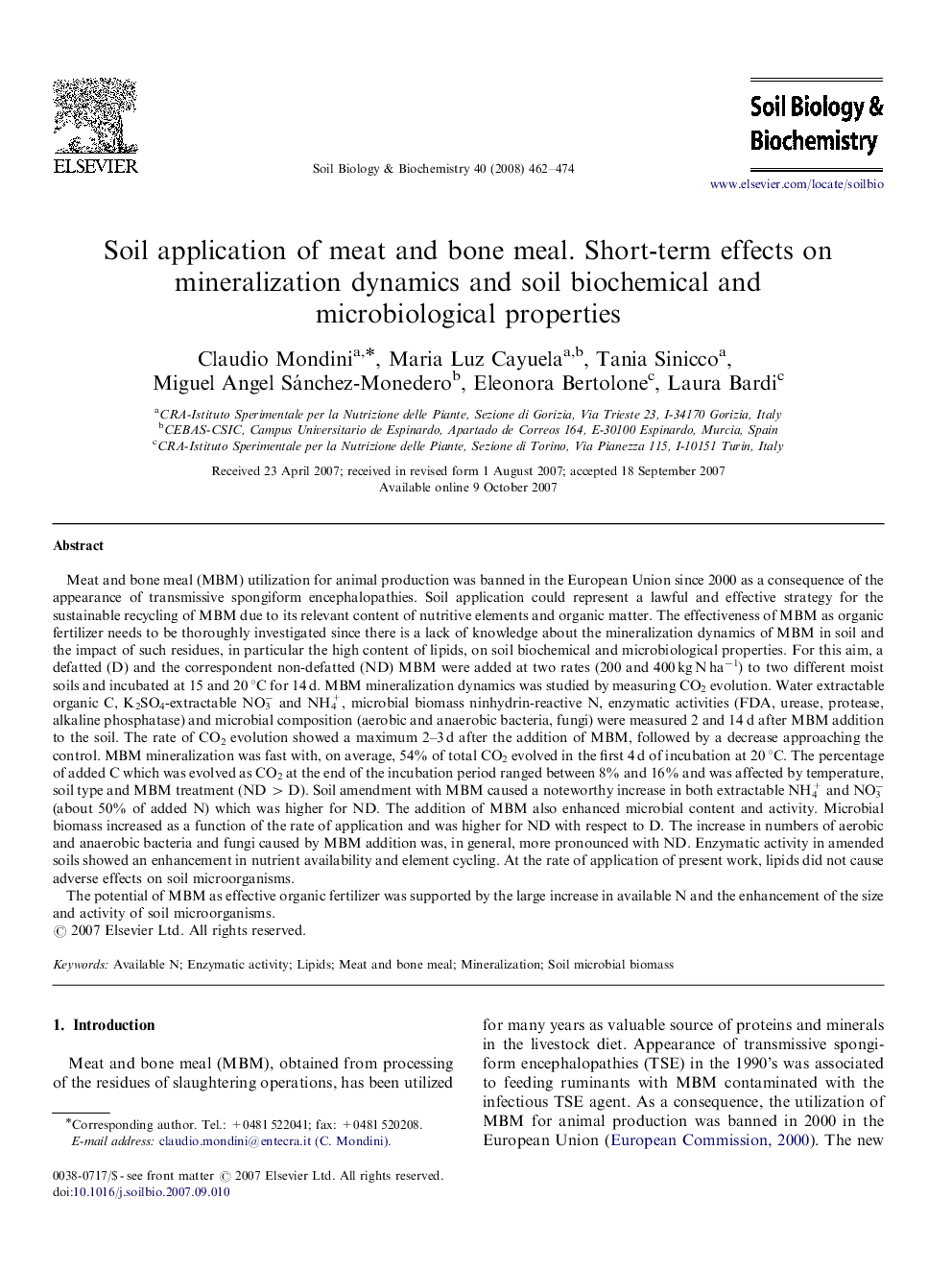| Article ID | Journal | Published Year | Pages | File Type |
|---|---|---|---|---|
| 2025340 | Soil Biology and Biochemistry | 2008 | 13 Pages |
Meat and bone meal (MBM) utilization for animal production was banned in the European Union since 2000 as a consequence of the appearance of transmissive spongiform encephalopathies. Soil application could represent a lawful and effective strategy for the sustainable recycling of MBM due to its relevant content of nutritive elements and organic matter. The effectiveness of MBM as organic fertilizer needs to be thoroughly investigated since there is a lack of knowledge about the mineralization dynamics of MBM in soil and the impact of such residues, in particular the high content of lipids, on soil biochemical and microbiological properties. For this aim, a defatted (D) and the correspondent non-defatted (ND) MBM were added at two rates (200 and 400 kg N ha−1) to two different moist soils and incubated at 15 and 20 °C for 14 d. MBM mineralization dynamics was studied by measuring CO2 evolution. Water extractable organic C, K2SO4-extractable NO3− and NH4+, microbial biomass ninhydrin-reactive N, enzymatic activities (FDA, urease, protease, alkaline phosphatase) and microbial composition (aerobic and anaerobic bacteria, fungi) were measured 2 and 14 d after MBM addition to the soil. The rate of CO2 evolution showed a maximum 2–3 d after the addition of MBM, followed by a decrease approaching the control. MBM mineralization was fast with, on average, 54% of total CO2 evolved in the first 4 d of incubation at 20 °C. The percentage of added C which was evolved as CO2 at the end of the incubation period ranged between 8% and 16% and was affected by temperature, soil type and MBM treatment (ND > D). Soil amendment with MBM caused a noteworthy increase in both extractable NH4+ and NO3− (about 50% of added N) which was higher for ND. The addition of MBM also enhanced microbial content and activity. Microbial biomass increased as a function of the rate of application and was higher for ND with respect to D. The increase in numbers of aerobic and anaerobic bacteria and fungi caused by MBM addition was, in general, more pronounced with ND. Enzymatic activity in amended soils showed an enhancement in nutrient availability and element cycling. At the rate of application of present work, lipids did not cause adverse effects on soil microorganisms.The potential of MBM as effective organic fertilizer was supported by the large increase in available N and the enhancement of the size and activity of soil microorganisms.
